What is influencer marketing and how to use it to develop e-commerce business?
- 10 December 2021
If you’re looking for non-standard ways to develop your e-commerce business, you should think about influencer marketing. Granted, this technique can be expensive, but if it’s conducted properly, the results can be worth far more. In this article, we’re going to talk about influencer marketing – why you should be interested in this strategy and how it helps you get more customers.
If you’ve never heard the word “influencer”, here’s a quick definition: An influencer is a person that has a significant impact on other peoples’ decisions, e.g., purchases. Typically, influencers have developed communities around them that listen, watch, and read everything they say or publish. All the major bloggers, Instagrammers, and YouTubers are influencers. So are celebrities.
Influencer marketing is based primarily on using their potential to grow your business. How does it work in practice?
Influencer marketing
Suppose you run an online store selling apparel and accessories. You want to reach new customers and show them that your products are worth their attention and money. One of the possible ways to achieve this goal is by starting cooperation with a fashion influencer that will be keen to showcase your products or take part in your marketing campaign.
Of course, to make this strategy fully effective, you have to meet several conditions:
- Your products have to be of at least good quality
- You have to have an interesting idea for such a campaign
- The influencer you pick has to have a community that should be interested in your products
In many cases, influencers themselves take part in creating a campaign that they will participate in, but in general, it’s the brand that should have at least an initial vision of such cooperation. Also, remember that the influencer you picked can simply refuse, especially when they don’t find your products appealing or interesting.
And then, there’s the budget issue. The most effective and recognizable influencers are pricey. And yes, the results they can bring usually trump the initial cost, but you have to be prepared to pay it.
SETTLEMENT MODELS
There are several ways of paying the influencer for participating in your campaign. It’s all really based on agreements between both parties. Usually, though, influencers are paid in three basic models:
- Per post (article, social media post, YT video)
- Lump-sum for the whole campaign
- A profit share (if they, e.g., participate in creating a new product or service)
The effectiveness of influencer marketing
Because influencers frequently have hundreds of thousands or even millions of fans and followers, the impact of their campaigns is usually massive. According to Rakuten Marketing research:

Image source: https://go.rakutenmarketing.com/hubfs/docs/2019%20Influencer%20Marketing%20Report%20-%20Rakuten%20Marketing.pdf
The same source indicates that as much as 41% of customers discover new products through influencers weekly. As a result, the vast majority of marketers find this marketing strategy effective:
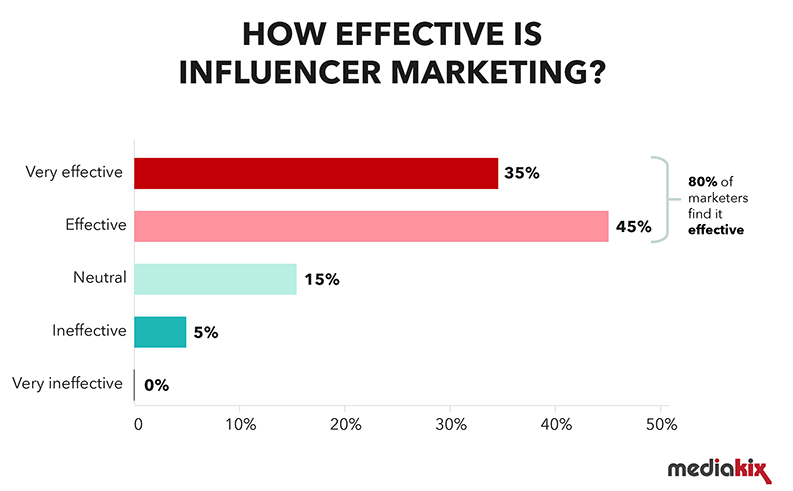
image source: https://mediakix.com/influencer-marketing-resources/influencer-marketing-industry-statistics-survey-benchmarks/
Interestingly, according to Mediakix, the most effective influencer marketing channels are Instagram and YouTube. Facebook lands fourth with just 23% of indications, right after blog posts (36%):
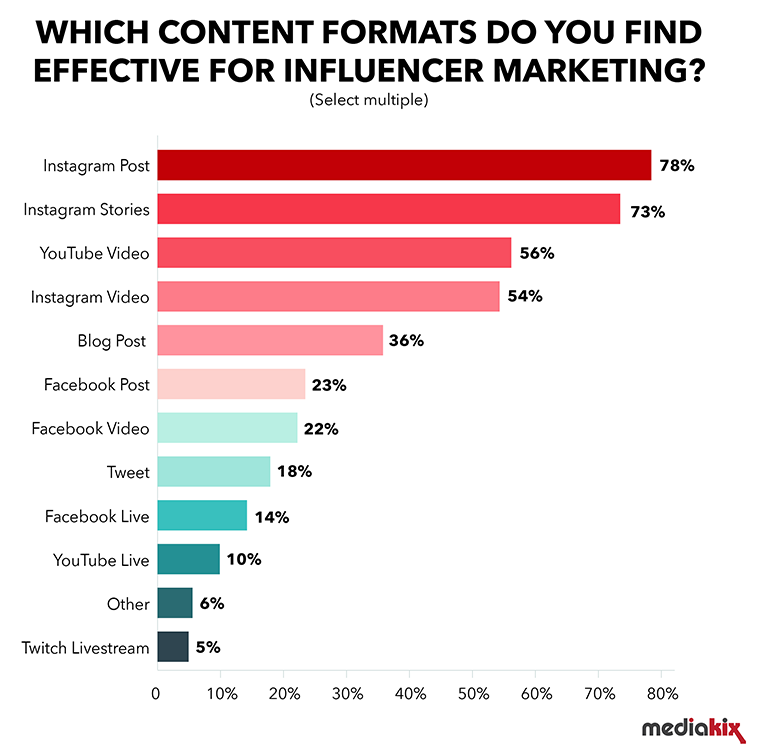
image source: https://mediakix.com/influencer-marketing-resources/influencer-marketing-industry-statistics-survey-benchmarks/
Downsides of influencer marketing
Influencer marketing can be really efficient, but only if you meet the conditions mentioned above and deal with some of the most pressing challenges related to this strategy. And these challenges are as follows[1]:
- Fake followers and inauthentic engagement: 50% of answers
- Social algorithms frequently change: 49%
- Rising influencer costs: 38%
- Keeping up with social media trends: 33%
- Building a strong creative strategy: 33%
The last point is especially valid. If you want to succeed with your influencer marketing campaign, you need a well-thought-out strategy that both your influencer(s) and potential customers will find engaging.
And what if you can’t afford to pay for the fully-fledged influencer marketing campaign? There’s the second way. You can work with so-called micro-influencers.
Who are micro-influencers?
These are aspiring influencers who don’t yet have fully developed communities. According to Hollyfy, they usually have about 10-50k followers or views on YT:
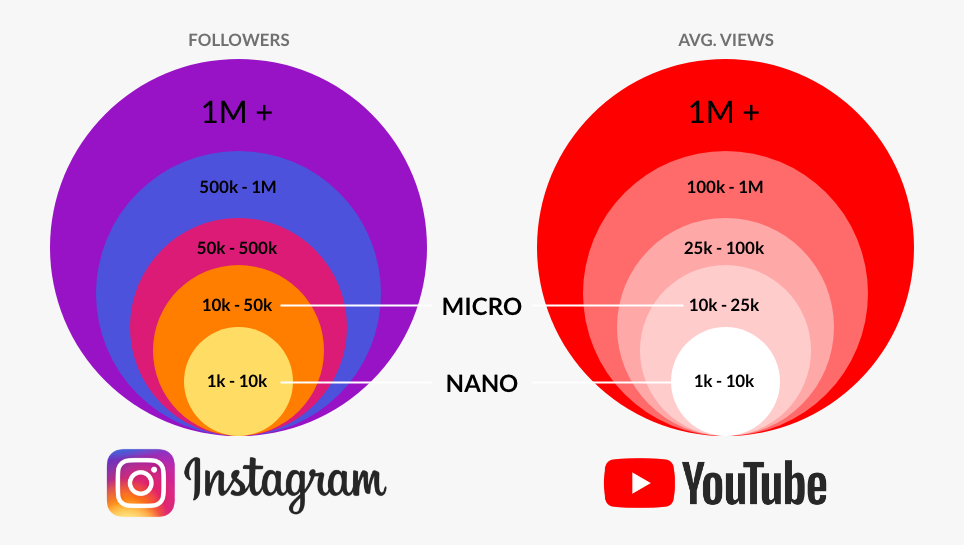
image source: https://blog.hollyfy.com/rise-of-micro-influencer-marketing/
Of course, micro-influencers will never get you similar results, but they are more flexible when it comes to cooperation with a brand, more natural, and cheaper to work with. It can be an optimal choice for smaller brands (but not limited to) that want to grow their target audience gradually and don’t have Apple-grade marketing budgets.
Influencer marketing strategy
When it comes to designing an optimal influencer marketing strategy, you have to focus on two crucial elements:
- Products that you want to promote
- Form of campaign
As we’ve already told you, influencer marketing is all about interesting and engaging forms. Therefore, you should carefully select products you want to promote and think of eye-catching ways to promote them. If you don’t have a satisfactory idea, you can always talk to your influencer (or the marketing agency you work with), but don’t expect them to do the whole work for you. Influencers willingly participate in campaigns with universal and important messages, creative forms, and well-thought-out plans.
Let’s take a look at two examples of well-designed influencer marketing campaigns:
INFLUENCER MARKETING EXAMPLES
Dunkin Donuts
This American brand proves that micro influencers are for large companies as well. DD wanted to reach millennials and raise awareness of their handcrafted espresso. One of the side goals was to improve Instagram presence and engagement. They decided to work with micro and even nano influencers, primarily millennials.
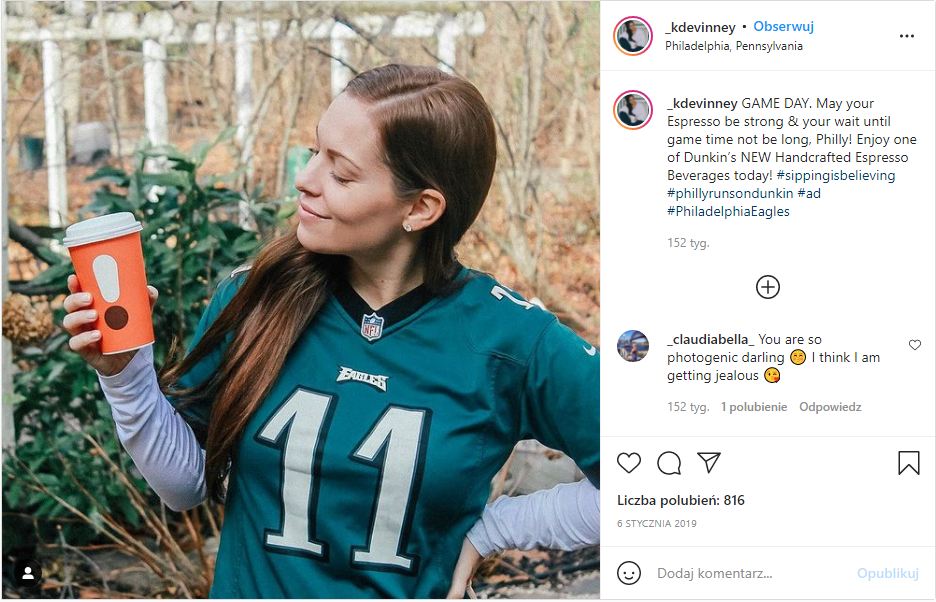
image source: https://www.instagram.com/p/BsTPGqVgjnu/
Here are the results of this campaign[2]:
- Analyzed posts: 25
- Instagram followers targeted: 1,136,000
- Likes: 21,975
- Comments: 965
- Engagement rate: 5.2%
Gillette
Gillette works with celebrities and athletes on a regular basis (e.g., Raheem Sterling, an English professional football player). But they are willing to work with less popular influencers, too. Recently, they’ve conducted an Instagram-based campaign that aimed to foster relations between fathers and sons and adopt a general family-oriented approach (remember? Universal, important message).
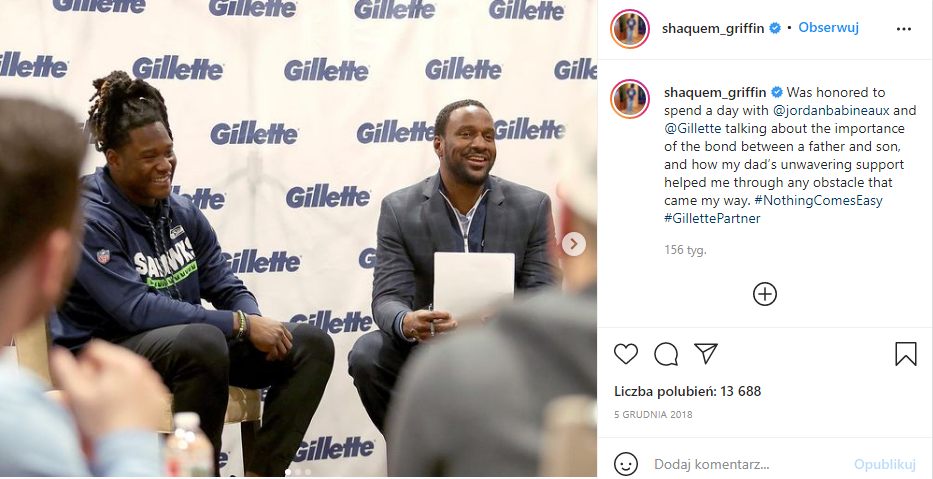
image source: https://www.instagram.com/p/BrBNp_enox2/
They invited both influencers with more than 500k followers and those with less than 30k. The results were very interesting[3]:
- Analyzed posts: 42
- Instagram followers targeted: 12,896,806
- Likes: 471,209
- Comments: 4,663
- Hashtag usage: 493
- Average engagement rate: 3.1%
As you can see, this strategy is effective and versatile. And you don’t have to work with top-of-the-line influencers to get optimal results. In some situations, these less-popular partners will bring you something invaluable: A natural, fresh image.
And don’t forget that it all starts with prices. If you want to flourish online, you need adequate prices that will enable your business to grow. And that’s where our role begins. Check our price monitoring tool and dynamic pricing platform to find out more.
Tweak prices in your store/company today!
[1] https://mediakix.com/influencer-marketing-resources/influencer-marketing-industry-statistics-survey-benchmarks/
[2] https://mediakix.com/blog/dunkin-donuts-nano-influencer-marketing-case-study-instagram/
[3] https://mediakix.com/blog/gillette-influencer-marketing-case-study-instagram/